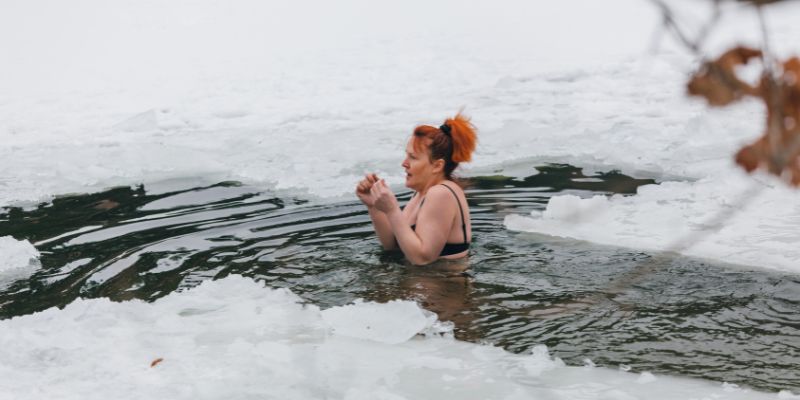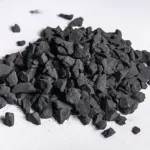Taking a plunge into an ice bath may seem crazy, but proponents of cold therapy swear by its wide-ranging benefits. From reducing inflammation to improving mood, supporters claim that embracing the cold can transform your health. Let’s dive into the practice of ice bathing and some of the touted perks.
The Concept Behind Ice Baths
An ice bath essentially involves immersing part or all of your body into near freezing water temperatures for a set period of time. Most devotees recommend water temps between 50-59°F and suggest starting with shorter durations of 2-5 minutes before working up to 15-20+ minute sessions.
The frigid water triggers the mammalian diving reflex, which diverts blood flow from non-vital organs to the heart, lungs and brain while constricting blood vessels. This helps regulate body temperature and blood pressure. The cold also activates your sympathetic nervous system, releasing hormones like adrenaline and noradrenaline.
Overall, the extreme temperature exposure from ice baths elicits generalized stress response, which advocates believe induces various physiological benefits.
Potential of Ice Bath Benefits
Supporters point to both mental and physical perks of taking regular ice baths:
Reduced Soreness & Improved Recovery
The cold water can constrict blood vessels and help flush waste products from your tissues and extremities that build up after intense exercise. This can reduce soreness and speed up your body’s recovery. Ice bath devotees report being able to workout more often and intensely thanks to these recuperative effects.
Read: How Much Does Planet Fitness Pay to Employees
Decreased Inflammation
The cold exposure and blood vessel constriction can also tamp down systemic inflammation that contributes to numerous diseases. Athletes in particular note less joint pain or swelling after introducing ice bath sessions into their routines.
Better Sleep Quality
The rush of hormones plus the large drop in body temperature after an ice bath may mimic the natural sleep cycle. Anecdotal reports indicate that ice bathers fall asleep faster, sleep more soundly and feel more well-rested after starting cold therapy.
Elevated Mood & Focus
The adrenaline and dopamine hit provides an antidepressant effect for many ice bathers. The mental clarity and burst of energy after a session also parallel the improved focus that many cold therapy fans self-report.
Strengthened Immunity
Fans claim that acclimating to cold water temps may boost immunity and reduce sick days. One theory is that brief exposure to extreme stresses (like cold) builds system-wide resilience. Research shows a more robust immune response after cold water swimming.
Increased Will Power & Resilience
Along with boosted immunity to viruses, proponents often report feeling an increased mental and emotional grit after incorporating ice baths. Pushing past the acute discomfort and intimidation of an ice plunge can lead to a greater sense of self-efficacy.
Potential Weight Loss Aid
While evidence is limited, some research points to enhanced metabolism and fat burn after cold exposure as the body works vigorously to warm back up through processes like shivering. Anecdotal reports from ice bathers also note modest weight loss.
Start Slowly & Safely
There are also some safety precautions for newbies.
The sudden cold exposure can cause rapid changes in heart rate, blood pressure and circulation that may stress those with certain medical conditions. Check with your doctor before starting an ice bath routine, especially if you have circulatory system issues, are pregnant or have cold allergies like Raynaud’s.
It’s also key not to overdo it when you first start out — always ease into ice baths gradually. Limit initial sessions to 3-5 minutes before incrementally increasing over multiple weeks. Pay attention to signs of hypothermia like intense shivering, loss of coordination or confusion.
While more research is warranted, the many upsides make it worth considering. Just be sure to start conservatively before going full iceman!
Conclusion
Ice baths represent an emerging health trend that continues to intrigue and inspire advocates with its myriad benefits. While more research is needed, the multiple potential upsides make them worth a try for the bold. Start conservatively and ease into the practice to tap into the full ‘cold is gold’ promise ice bathing offers.
FAQs
Q: How cold should an ice bath be?
A: Most recommendations are for water between 50-59°F. Some athletes start with higher temps around 60°F and work down.
Q: How long should you do an ice bath?
A: Start with 2-5 mins for the first sessions. Slowly increase to 10-15+ minutes over multiple weeks as tolerated. Listen to your body!
Q: When should you not do an ice bath?
A: Avoid ice baths if you have heart problems, high blood pressure, Raynaud’s or are pregnant. Check with your doctor if unsure.
Q: What are signs of hypothermia in an ice bath?
A: Monitor for intense, uncontrollable shivering, loss of coordination, slurred speech, confusion or drowsiness during/after. Get out immediately if experiencing.







